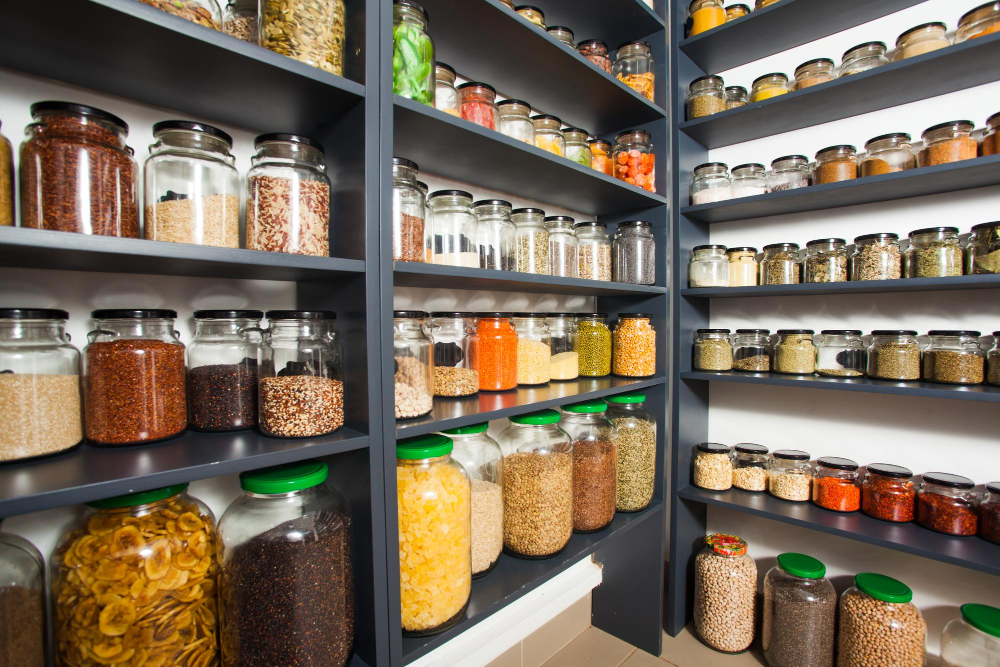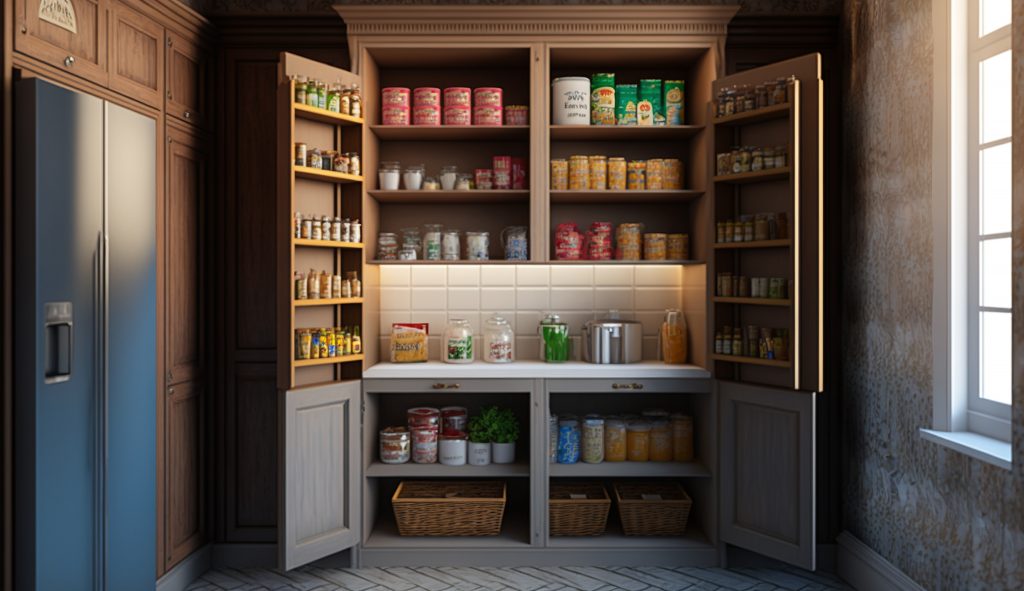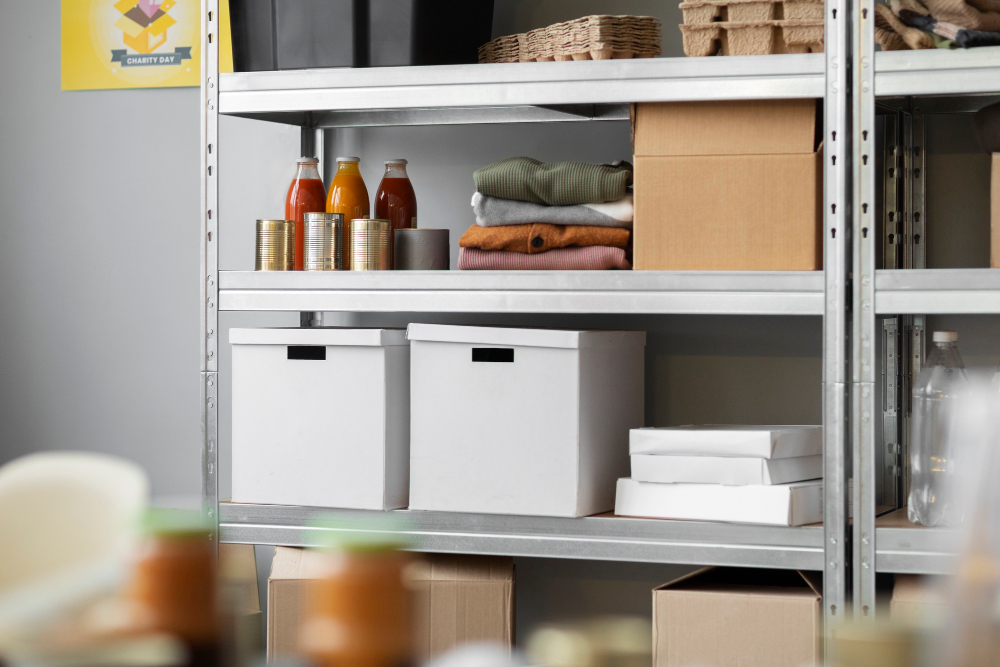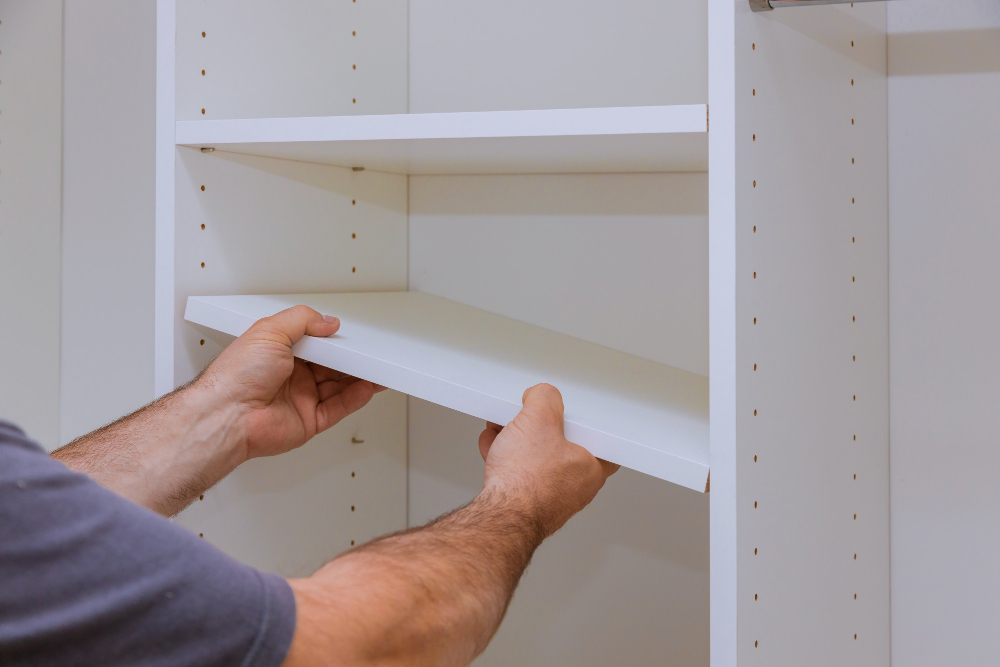Last updated on
Explore the benefits and drawbacks of ventilated and solid shelving in pantries to make an informed decision on the best storage solution for your needs.
Are you planning to organize your pantry but feeling overwhelmed by the shelving options available? One of the most important decisions you’ll make is choosing between ventilated and solid shelving. While both types have their benefits, it’s essential to understand their differences and how they can affect your pantry’s organization.
As a seasoned male home decorator who has seen it all, I’m here to guide you through the pros and cons of each type of shelving so that you can make an informed decision for your pantry. So grab a cup of coffee, sit back, and let’s dive into the world of ventilated vs.
Solid shelving in pantries!
Key takeaways:
- Ventilated shelving allows air circulation, preventing moisture and mold.
- Solid shelving doesn’t have gaps, preventing small items from falling.
- Ventilated shelving provides better visibility, easier to locate items.
- Solid shelving has higher weight capacity, suitable for heavy items.
- Ventilated shelving is easier to clean, while solid shelves accumulate more dust.
What's Inside
Ventilated Shelving Benefits

Ventilated shelving is a popular choice for pantries due to its many benefits. One of the most significant advantages of ventilated shelving is that it allows air to circulate freely, preventing moisture buildup and mold growth.
This feature makes it an ideal option for storing perishable items such as fruits and vegetables, which require proper ventilation to stay fresh longer.
Another benefit of ventilated shelving is that it’s lightweight yet sturdy enough to hold heavy items without sagging or bending. It also provides better visibility than solid shelves since you can see through the gaps between wires or slats, making it easier to locate items quickly.
Ventilated shelves are easy to clean and maintain since they don’t accumulate dust as much as solid ones do. You can simply wipe them down with a damp cloth or use a vacuum cleaner attachment on low power settings.
Solid Shelving Advantages

Unlike ventilated shelves, solid shelves don’t have gaps between the slats, which means you won’t have to worry about small items falling through the cracks. Solid shelving also has higher weight capacity than ventilated shelving and can support heavier items without bending or sagging.
Another advantage of solid shelving is that it’s easier to clean and maintain than its counterpart. Since there are no spaces between the slats, dust and debris won’t accumulate as easily on solid shelves as they do on ventilated ones.
This makes cleaning your pantry much more manageable since you’ll only need to wipe down each shelf with a damp cloth periodically.
Air Circulation Comparison

Ventilated shelves have gaps between the slats that allow for better airflow, which can help keep your food fresher for longer periods. On the other hand, solid shelves don’t provide as much ventilation and may trap moisture or odors inside your pantry.
However, while ventilated shelving allows more air circulation than solid shelving does, it also means that dust and debris can accumulate on the shelf’s surface easily. This accumulation requires regular cleaning of both the shelf itself and any items stored on them.
Weight Capacity Differences

Solid shelves can hold more weight than ventilated ones because they don’t have gaps that weaken their structure. If you plan on storing heavy items in your pantry, such as canned goods or kitchen appliances, solid shelving may be the better option for you.
However, if you’re not planning on storing anything too heavy and want a more breathable storage solution for your pantry items like fruits and vegetables or bread loaves then ventilated shelves are perfect for this purpose.
It’s important to note that even though solid shelving has a higher weight capacity than its counterpart doesn’t mean it’s indestructible. It still has limits and should be installed correctly with proper support brackets to ensure safety.
When deciding between ventilated vs.
Cleaning and Maintenance

The open design of the ventilated shelves allows for better air circulation, which helps prevent mold and mildew growth. Any spills or crumbs can easily fall through the gaps in the shelves, making them easier to clean.
On the other hand, solid shelves require more effort when it comes to cleaning as they tend to accumulate dust and debris on their surfaces. They also have a higher risk of developing moisture-related issues if not cleaned regularly.
To keep your pantry organized and hygienic with either type of shelving system requires regular maintenance such as wiping down surfaces with disinfectant wipes or sprays every few weeks. However, overall ventilation makes maintaining cleanliness much easier in pantries that use this type of shelf design.
Material Options

Ventilated shelves are typically made of wire or metal, while solid shelves can be made of wood or laminate materials.
Wire and metal ventilated shelving is a popular choice because it allows air to circulate freely around stored items. This feature helps prevent moisture buildup and mold growth in humid environments like pantries.
Wire shelving is lightweight yet sturdy enough to hold heavy items without bending or sagging.
On the other hand, solid shelves offer more stability and support for heavier objects than their ventilated counterparts. Wood and laminate materials provide a sleek look that complements any pantry design style while also being durable enough to withstand daily use.
Ultimately, the material you choose will depend on your personal preference as well as factors such as weight capacity needs and budget constraints.
Installation Process

The shelves come in standard sizes and can be cut down to fit your pantry’s dimensions. They are also adjustable, allowing you to customize the height of each shelf according to your needs.
On the other hand, solid shelving requires more effort and time for installation since they need precise measurements before cutting them down into custom sizes that fit perfectly in your pantry space. Solid shelves are not adjustable like their ventilated counterparts; hence you must ensure accurate measurements before installing them.
As a seasoned male home decorator who has installed both types of shelving systems countless times over my career, I recommend hiring a professional if you’re unsure about how best to install either type of shelf system properly.
Cost Analysis

Ventilated shelving tends to be more expensive than solid shelves due to the added materials required for construction. However, this extra cost can pay off in the long run as ventilated shelves provide better air circulation and prevent mold growth on stored items.
On the other hand, solid shelves are generally less expensive but may require additional cleaning efforts due to their lack of ventilation. They may not hold up as well over time if exposed to moisture or humidity.
Ultimately, your budget will play a significant role in determining which type of shelving you choose for your pantry. It’s essential to weigh the benefits and drawbacks of each option against their respective costs before making a final decision.
While both types of shelving have their advantages and disadvantages when it comes down strictly on price; Solid Shelving has an edge over Ventilated Shelvings because they are cheaper upfront with lower maintenance costs but might not last as long compared with its counterpart that requires higher initial investment yet provides better air circulation leading towards longer shelf life expectancy for stored items inside pantries.




